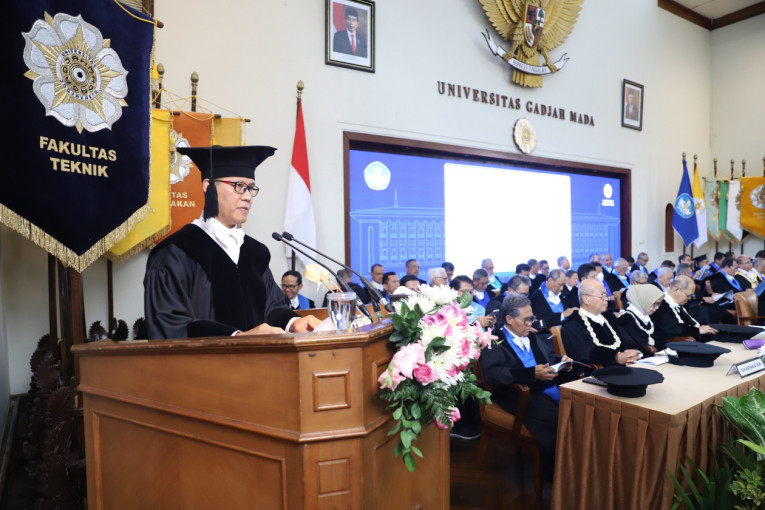
In the grand tapestry of human civilization, sedimentology and stratigraphy weave a crucial narrative, influencing endeavors to meet diverse needs and serving as sentinels against potential disasters.
The profound comprehension of sedimentary rock characteristics within the Earth’s crust empowers individuals to navigate exploration sagaciously, while insights into sedimentation processes foster a heightened awareness of potential disasters.
These sentiments marked the culmination of Professor Sugeng Sapto Surjono’s inauguration speech as a professor specializing in sedimentology-stratigraphy at the UGM Faculty of Engineering.
The inauguration ceremony at the UGM Senate Hall on Tuesday (Dec. 5) saw him elaborate on “Sedimentology-Stratigraphy for Geological Resource Exploration and Mitigation of Geological Disasters.”
As the Vice Dean for Education and Student Affairs at the Faculty of Engineering, Professor Surjono focused on oil and gas exploration within resource exploration and sedimentary disasters within geological disasters.
Both spheres, he emphasized, fall under the purview of applied sedimentology-stratigraphy, closely aligned with his professional pursuits.
Delving into the perpetual cycle of sedimentary rock formation—encompassing erosion, sediment transportation, sedimentation, and lithification—Professor Surjono highlighted its enduring relevance.
Excessive occurrences of sedimentary processes, particularly erosion, sediment transport, and deposition, intersecting with human interests, can give rise to disasters such as extensive erosion, floods, landslides, lahars, and more.
The unchecked erosion and sedimentation in watershed areas can expedite reservoir siltation. In succinct terms, the negative potential of sedimentation processes metamorphoses into the sedimentary disaster itself.
Against the backdrop of 461 landslides, 917 floods, and 24 tidal waves and abrasions reported from Jan. 1 to Nov. 1, 2023, resulting in substantial financial losses and casualties, Professor Surjono underscored the inevitability of such natural processes.
He stressed the need for an in-depth understanding of sedimentary rock characteristics and processes for compelling geological resource exploration and preventing sedimentary disasters. In this pursuit, sedimentology and stratigraphy professionals’ expertise is paramount.
Sedimentology and stratigraphy, integral components of geological sciences, have evolved using scientific principles dating back to the 17th century. Fundamental laws such as superposition and horizontality, sedimentation cycles by water, uniformitarianism (the present as a key to the past), and the law of facies succession continue to be invaluable in studying sedimentary rocks.
Professor Surjono concluded, “This field of study is evolving in tandem with the utilization of geological science across various domains, encompassing geological resource exploration and disaster mitigation activities.”
Author: Agung Nugroho
Photographer: Paris

